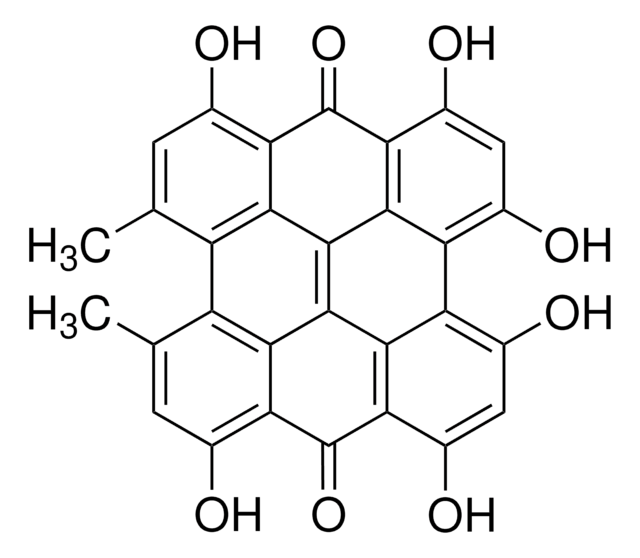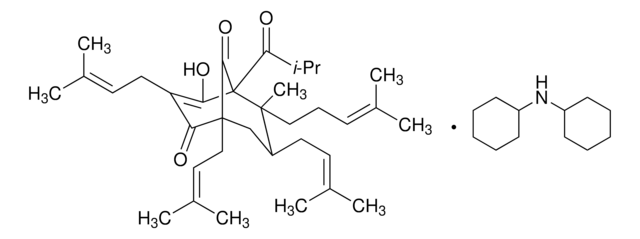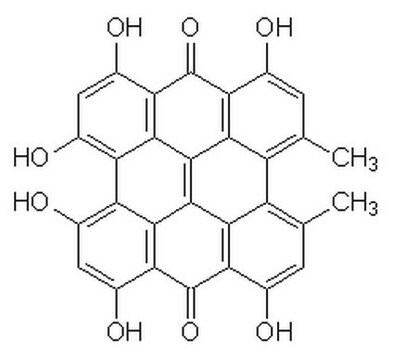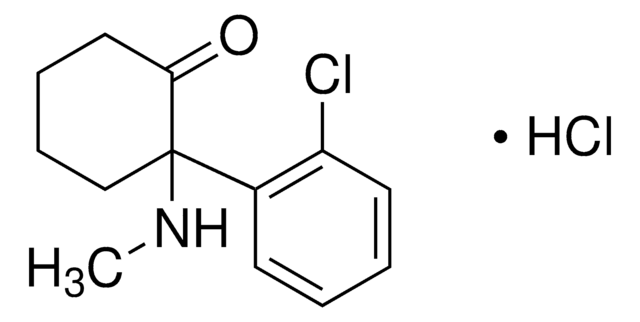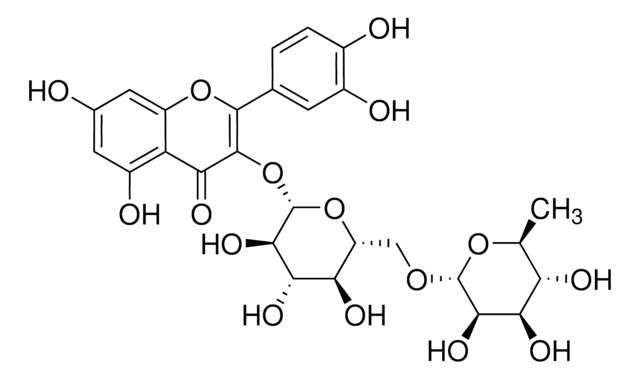About This Item
Recommended Products
Quality Level
Assay
≥85% (HPLC)
form
solution
storage temp.
−20°C
SMILES string
CC(C)C(=O)[C@@]12C(O)=C(C\C=C(\C)C)C(=O)[C@@](C\C=C(/C)C)(C[C@H](C\C=C(\C)C)[C@@]1(C)CC\C=C(\C)C)C2=O
InChI
1S/C35H52O4/c1-22(2)13-12-19-33(11)27(16-14-23(3)4)21-34(20-18-25(7)8)30(37)28(17-15-24(5)6)31(38)35(33,32(34)39)29(36)26(9)10/h13-15,18,26-27,38H,12,16-17,19-21H2,1-11H3/t27-,33+,34+,35-/m0/s1
InChI key
IWBJJCOKGLUQIZ-HQKKAZOISA-N
General description
Application
- as a reference standard for calibration curve generation in high-perfornamce liquid chromatography (HPLC) analysis
- to test its cytotoxic effect and apoptosis induction in mouse embryonic cells
- as a pregnane X receptor (PXR) in porcine brain capillary endothelial cells for transport assay
Biochem/physiol Actions
Signal Word
Danger
Hazard Statements
Precautionary Statements
Hazard Classifications
Acute Tox. 3 Dermal - Acute Tox. 3 Inhalation - Acute Tox. 3 Oral - Flam. Liq. 2 - STOT SE 1
Target Organs
Eyes
Storage Class Code
3 - Flammable liquids
WGK
WGK 2
Flash Point(F)
49.5 °F - closed cup
Flash Point(C)
9.7 °C - closed cup
Personal Protective Equipment
Regulatory Listings
Regulatory Listings are mainly provided for chemical products. Only limited information can be provided here for non-chemical products. No entry means none of the components are listed. It is the user’s obligation to ensure the safe and legal use of the product.
EU REACH Annex XVII (Restriction List)
Certificates of Analysis (COA)
Search for Certificates of Analysis (COA) by entering the products Lot/Batch Number. Lot and Batch Numbers can be found on a product’s label following the words ‘Lot’ or ‘Batch’.
Already Own This Product?
Find documentation for the products that you have recently purchased in the Document Library.
Customers Also Viewed
Our team of scientists has experience in all areas of research including Life Science, Material Science, Chemical Synthesis, Chromatography, Analytical and many others.
Contact Technical Service